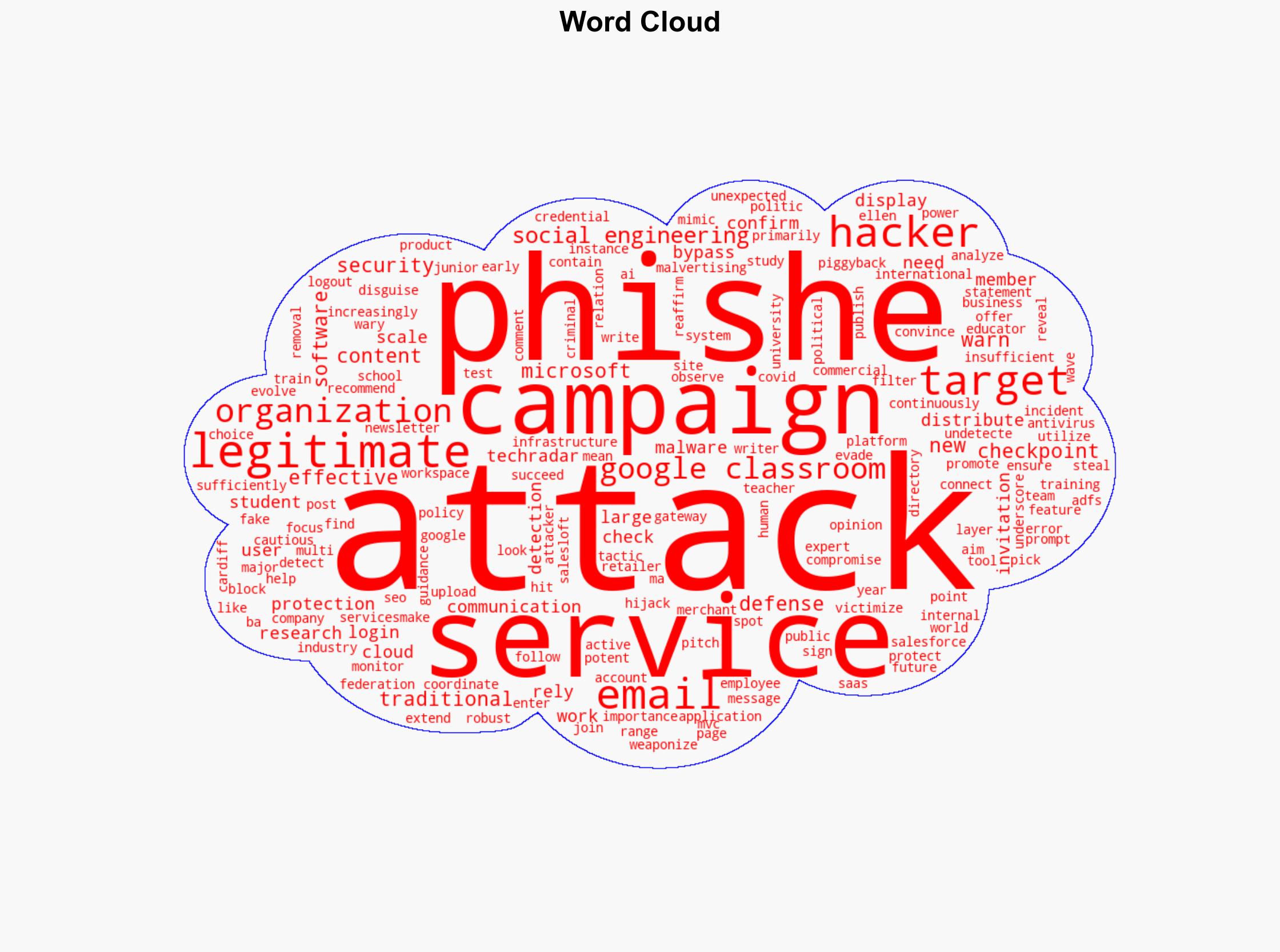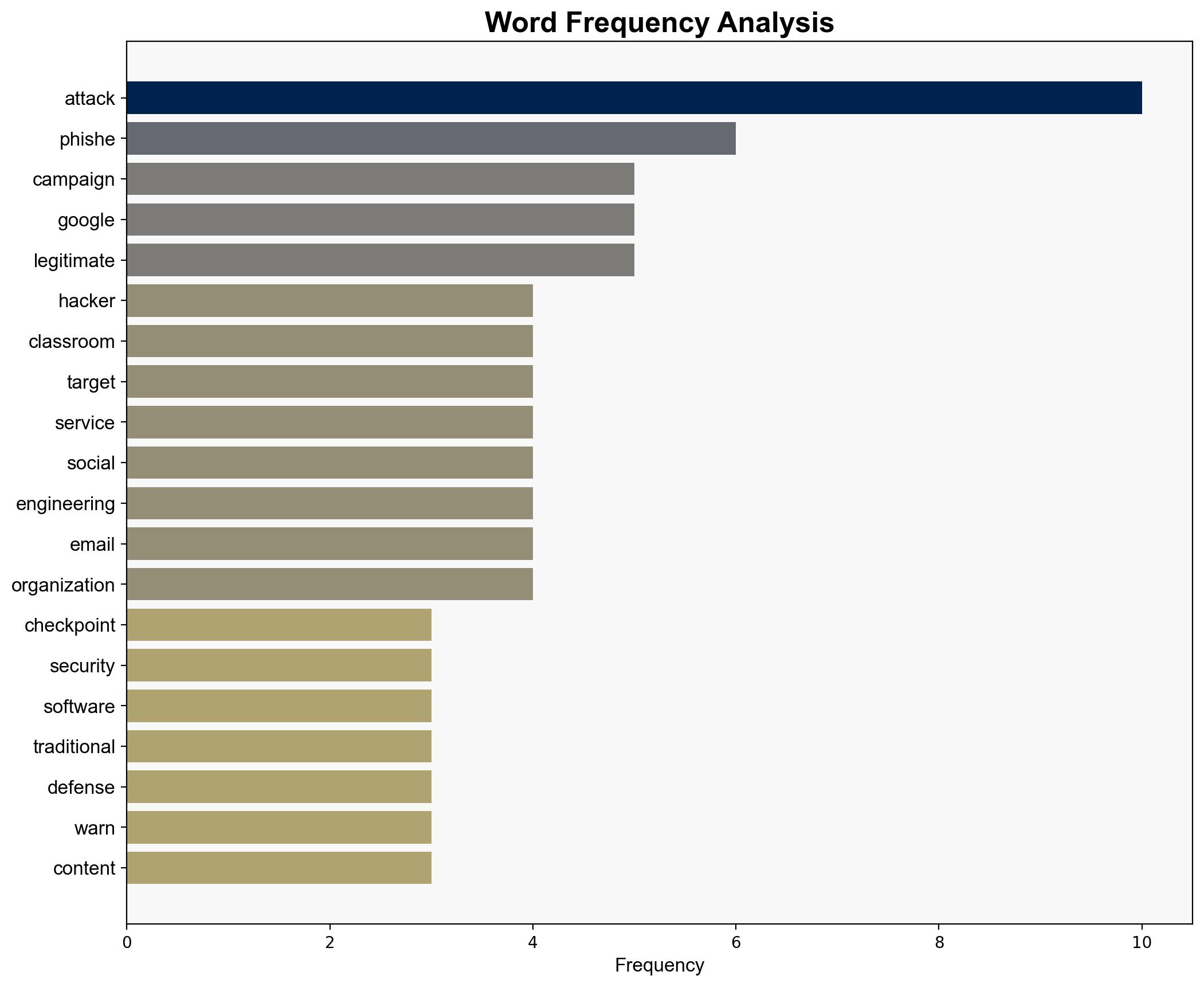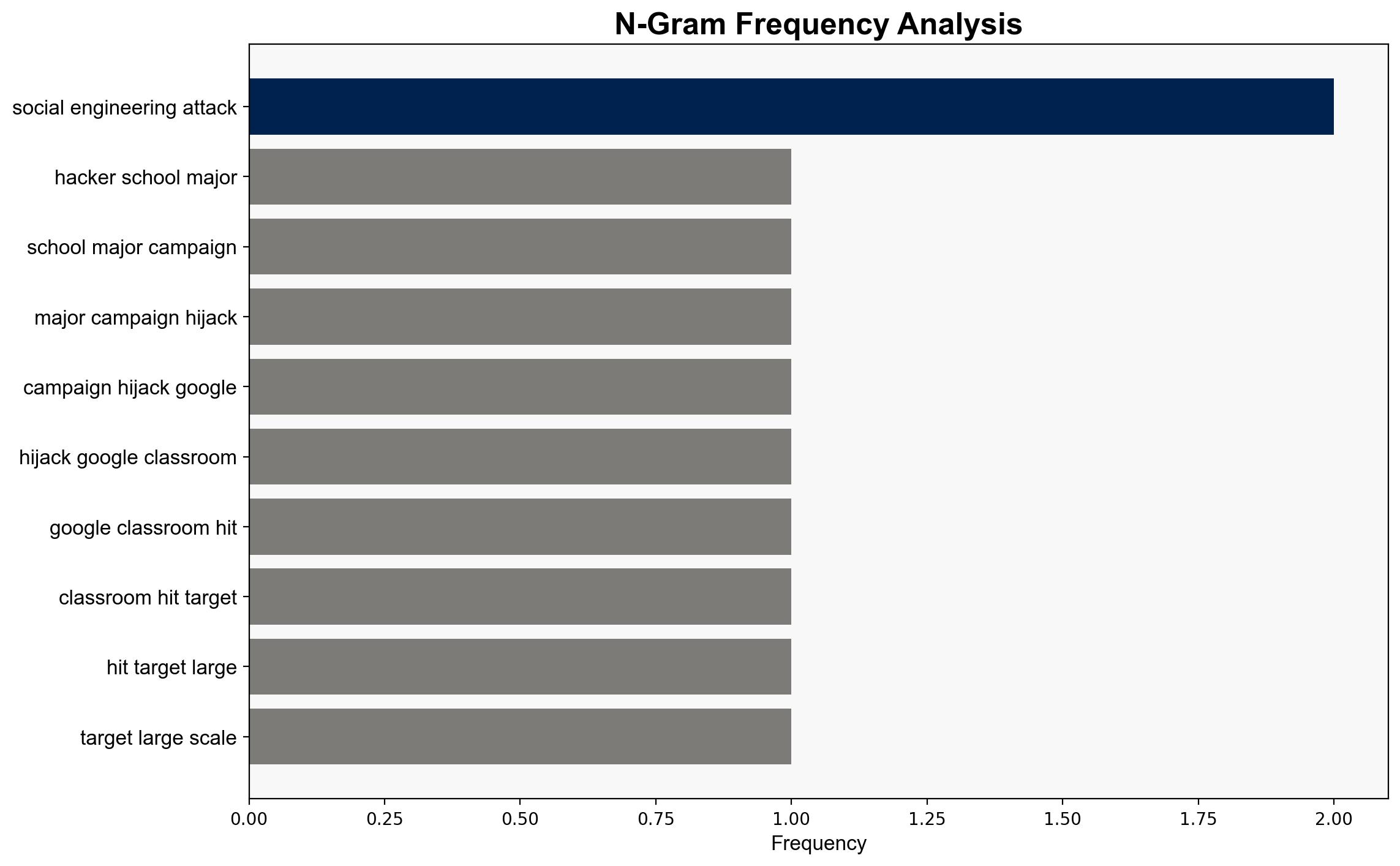Hackers are also going back to school – major campaign hijacks Google Classroom to hit targets – TechRadar
Published on: 2025-09-01
Intelligence Report: Hackers are also going back to school – major campaign hijacks Google Classroom to hit targets – TechRadar
1. BLUF (Bottom Line Up Front)
The intelligence suggests a significant cybersecurity threat involving the hijacking of Google Classroom to conduct phishing campaigns. The most supported hypothesis is that threat actors are leveraging legitimate cloud services to bypass traditional security measures. Confidence level: Moderate. Recommended action includes enhancing security protocols and user training to recognize and mitigate phishing attempts.
2. Competing Hypotheses
1. **Hypothesis A**: Hackers are primarily targeting educational institutions using Google Classroom to exploit the less secure environments and the high volume of communication between students and educators.
2. **Hypothesis B**: The campaign is part of a broader strategy to exploit legitimate cloud services, like Google Classroom, to target a wide range of industries and organizations, not limited to education.
Using ACH 2.0, Hypothesis B is better supported due to evidence of attacks on various industries and the use of legitimate services to bypass security measures.
3. Key Assumptions and Red Flags
– **Assumptions**: It is assumed that all targeted entities have similar vulnerabilities in their use of Google Classroom. Another assumption is that security software cannot detect these attacks due to their reliance on legitimate platforms.
– **Red Flags**: Lack of specific data on the scale and success rate of these attacks. Potential bias in assuming all educational institutions are equally vulnerable.
– **Blind Spots**: Limited information on the geographical distribution of the attacks and the specific tactics used in different regions.
4. Implications and Strategic Risks
The use of legitimate platforms for phishing campaigns represents a significant threat to cybersecurity, potentially leading to increased data breaches and financial losses. The strategy could escalate to include more sophisticated attacks, leveraging other cloud services. This poses risks to economic stability and could undermine trust in cloud-based educational tools.
5. Recommendations and Outlook
- Enhance user training programs to recognize phishing attempts, focusing on unexpected communications and invitations.
- Implement AI-powered detection systems to analyze content and identify potential threats.
- Scenario Projections:
- Best Case: Rapid adaptation of security measures reduces the effectiveness of these phishing campaigns.
- Worst Case: Attackers successfully compromise multiple high-profile targets, leading to significant data breaches.
- Most Likely: Continued attempts with moderate success, prompting gradual improvements in security protocols.
6. Key Individuals and Entities
– Google Classroom users (students and educators)
– Check Point (security research firm)
– TechRadar (source of the report)
7. Thematic Tags
national security threats, cybersecurity, counter-terrorism, regional focus




